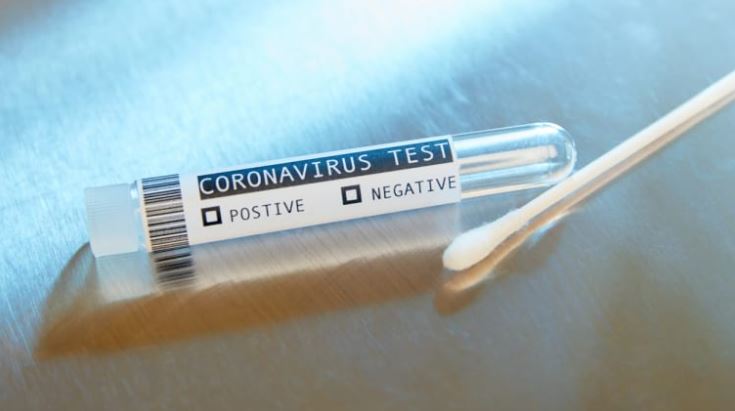Now that the U.S. Supreme Court has blocked the Occupational Safety and Health Administration’s (OSHA’s) vaccine-or-testing rule for large employers, businesses may want to review their COVID-19-related workplace policies.
OSHA’s emergency temporary standard (ETS) would have required businesses with at least 100 employees to ensure workers are vaccinated against the coronavirus or undergo weekly COVID-19 testing by Feb. 9.
Now What?
In light of the high court’s ruling, some employers may decide to drop plans to require vaccination or administer weekly testing programs. “The Supreme Court’s decision on the ETS comes as a massive sigh of relief for businesses already saddled with the difficult task of addressing COVID-19 risks in the workplace,” said Jackie Gessner, an attorney with Barnes & Thornburg in Indianapolis. “Businesses were struggling with how to handle large numbers of exemption requests and the seemingly impossible task of administering weekly tests, especially given the test supply shortage.”
Other businesses might retain policies that align with OSHA’s now-halted ETS. Private-sector employers still have the right to roll out a vaccine mandate or vaccine-or-testing policy that mirrors the ETS, noted Ian Carleton Schaefer, an attorney with Loeb & Loeb in New York City.
Additionally, employers may still have to comply with other COVID-19 vaccination rules at the state, local and industry level.
In a separate opinion on Jan. 13, the Supreme Court allowed the federal Centers for Medicare & Medicaid Services (CMS) to require COVID-19 vaccination for health care workers at Medicare- and Medicaid-certified providers and suppliers.
Employers that are covered by the CMS health care directive should note that the compliance dates have been extended. Workers must receive their first COVID-19 vaccine dose by Jan. 27 and be fully vaccinated by Feb. 26. Additionally, employers must track employees’ vaccination statuses and develop vaccination policies that include medical and religious exemptions and accommodations.
Vaccine-or-Testing Litigation Background
In November 2021, the 5th U.S. Circuit Court of Appeals temporarily suspended OSHA’s ETS while it considered a challenge brought by state attorneys general and private employers that oppose the directive. The employers argued that OSHA’s “claimed authority over [employees’] private lives and vaccine status is an egregious government overreach.”
Similar challenges to the ETS were filed with other federal appeals courts, and the cases were moved to the 6th U.S. Circuit Court of Appeals in a consolidated action, and in December 2021, the 6th Circuit lifted the stay, giving OSHA the green light to enforce the directive.
Under the Supreme Court’s ruling, however, employers will not have to comply with the ETS while litigation ensues. In a Jan. 13 order, the high court criticized OSHA’s rule as a “blunt instrument” that “draws no distinctions based on industry or risk of exposure to COVID-19.” The high court also called the rule a “significant encroachment into the lives—and health—of a vast number of employees.” The Occupational Safety and Health (OSH) Act does not plainly authorize the rule, the court stated.
Notably, the justices were not asked to rule on the validity of either the OSHA or the CMS rule. “Instead, the Supreme Court accepted the cases to review whether the temporary injunctions that had been issued to block the rules were properly put into place,” noted law firm Fisher Phillips.
The case will now be sent back to the 6th Circuit to decide whether to permanently block or uphold the vaccine-or-testing directive. “Technically, the court didn’t kill the ETS for good, but the long-term prognosis is not looking good,” the firm added.
Eric Hobbs, an attorney with Ogletree Deakins in Milwaukee, said the Supreme Court justices in the majority went to great lengths to explain why they believe the parties that challenged the rule are likely to prevail on the merits of the case.
“It’s possible the 6th Circuit panel nevertheless will go its own way when deciding the merits of the ETS. But the Supreme Court’s opinion that OSHA reached well beyond its authority under the OSH Act was pretty forceful, and I think it unlikely, therefore, that the court of appeals will thumb its nose at the court majority,” he predicted.
OSHA Rule Could Return
“OSHA’s ETS was only designed to remain in place for six months, after which it must be replaced by a permanent standard,” Fisher Phillips explained. The agency is considering a permanent vaccine-or-testing standard and accepting comments on the proposal through Jan. 19.
Lawsuits against the permanent rule, if finalized, can also be expected. Hobbs noted that the Supreme Court’s analysis in the ETS case did not turn on the emergency temporary nature of the standard. “The message of the majority seemed, instead, clearly to be that a regulation of the broad kind attempted by OSHA through the ETS is not one that can withstand muster under the Constitution absent a clear authorization by Congress to OSHA to do so,” he said.
Secretary of Labor Marty Walsh said he was disappointed in the Supreme Court’s decisions. “OSHA stands by the [ETS] as the best way to protect the nation’s workforce from a deadly virus that is infecting more than 750,000 Americans each day and has taken the lives of nearly a million Americans.”
Walsh added, “Regardless of the ultimate outcome of these proceedings, OSHA will do everything in its existing authority to hold businesses accountable for protecting workers, including under the Covid-19 National Emphasis Program and general duty clause.”
